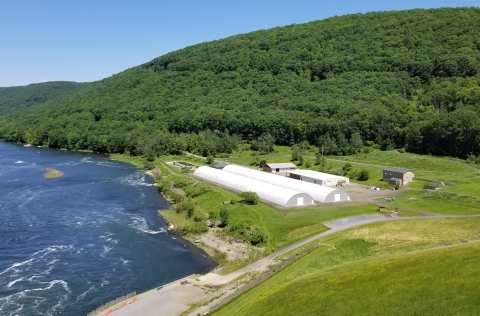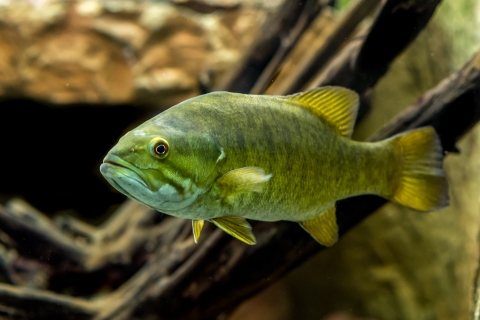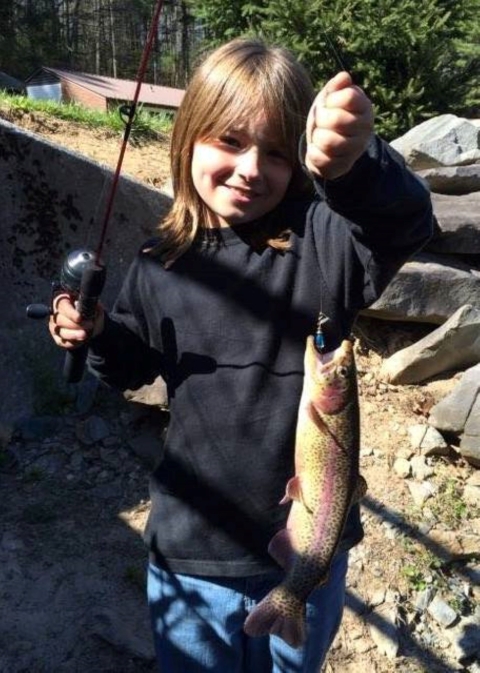Ahh, fall! Days grow shorter, the sun is hanging lower in the sky and casting a cool golden hue over everything. The leaves, once green, are changing into reds, oranges, and golds, painting the landscape in vibrant shades before they drift lazily to the ground. There’s a crispness in the air now, and suddenly a light jacket or cozy sweatshirt becomes your constant companion, wrapping you in warmth against the cool breezes.
For fishermen, fall represents much more than just a change in weather or wardrobe. It’s a season to fine-tune your fishing techniques and adjust to the evolving habits of fish as they prepare for the colder months ahead.
As the temperatures drop, fish instinctively know they need to conserve energy. They no longer have the luxury—or desire—to chase fast-moving, small bait that would require them to burn more calories than they would gain. Instead, they shift their focus to larger prey, something that promises a bigger payoff for less effort.
This behavioral change is key for anglers. Fall fishing isn’t just about presenting the bait; it’s about offering the right kind of bait. Larger lures or baitfish become more enticing as they offer more calories in one easy bite. Fish are still feeding aggressively, preparing for the leaner times of winter, but they are selective now, choosing baits that maximize their energy gain with minimal exertion.
The slower pace of the season also calls for a change in technique. Slow, deliberate presentations, mimicking the more lethargic movement of natural prey, become far more effective.
So, as the leaves fall and the air cools, remember: the fish are changing too. Their appetites shift, their energy levels drop, and their preferences evolve. Adapting to these changes, much like nature itself does, is the key to staying one step ahead in the ever-changing world of fall fishing.
As you prepare to head out the door on that fall fishing trip, there could be water bodies in your area you've not thought about visiting before. Some of these could be located near, on, or have access through a National Fish Hatchery.
Thinking about trout, walleye, bass, or muskie, look into Allegheny National Fish Hatchery, Pennsylvania, which is located on the Allegheny River. Though fishing is not permitted in the hatchery, it provides shore angler access, when requested to a designated area of the Allegheny River. Fishing downstream from the Kinzua Dam yields some of the largest freshwater fish (trout, walleye, bass, muskellunge) in North America. The hatchery has two public parking areas for anglers, birders, and tours. Adjacent to the hatchery, the U.S. Army Corps of Engineers provides an accessible fishing platform with comfort station at the dam, and a boat launch directly cross river from the hatchery.
Fall fishing tip: Walleye are moving to shallow water in early fall to enjoy the warmer temperatures, but as the temps drop even more, they are more likely found in deeper water.
Though salmon most likely comes to mind for fishing the Columbia River in the early fall, think about those smallmouth bass too. Spring Creek National Fish Hatchery, located in Washington and only 65 miles east of Portland, Oregon, sits along the Columbia River, at river mile 167. There are smallmouth bass to be caught, and the shore areas provides some pretty respectable smallmouth bass habitat. If you are in the area anyway though, at the right time of year, tens of thousands fall Chinook salmon return to the hatchery annually. There is also many other activities besides fishing to enjoy.
Fall fishing tip: You can catch smallmouth bass in the Columbia River year-round, but fall is one of the best times to catch this species of bass. The ideal water temperature for smallmouths is upper 40s to upper 50s so don't wait too long.
Surrounded by national forest, the Georgia located Chattahoochee Forest National Fish Hatchery occupies almost 45 acres of land. Running right through the hatchery property is Rock Creek, a tributary of the Toccoa River. Yes, fishing is most definitely allowed in Rock Creek offering an exciting trout fishing experience for first-time and seasoned anglers. Also, Rock Creek Lake is just two miles north of the hatchery and provides good fishing opportunities. Just a reminder, besides your fishing license, you'll need to pick up a trout stamp at a local store.
Fall fishing tip: Fall is the perfect time to target brook trout as they become more aggressive in cooler waters but it can be a challenge as well. Finding the right location, time of day, and adapting your bait and lure selection will help land you with a successful fishing trip.
More Fishing Information:
Expert Tips to Hook the Perfect Fish







